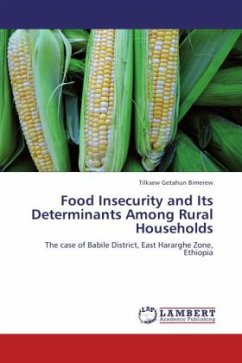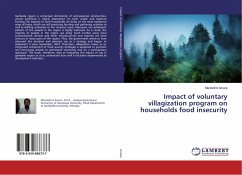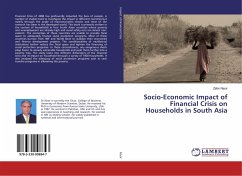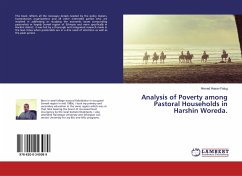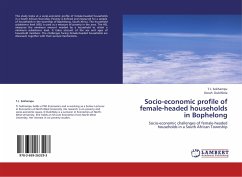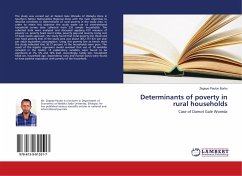
Economic Analysis of Rice Consumption Among Households in Maiduguri
Versandkostenfrei!
Versandfertig in 6-10 Tagen
27,99 €
inkl. MwSt.

PAYBACK Punkte
14 °P sammeln!
The specific objectives were to examine the socio-economic characteristics, determine factors affecting household rice consumption and determine the various income groups of the respondents. Multistage random sampling technique was used to survey 80 respondents across the metropolis. Descriptive statistics, multiple regression and correlation analysis were the analytical techniques used. Results revealed that majority of the respondents were female with a relative high income range of 50,000 - 170,000. Double - log function was chosen as the lead equation with R2 0.587. Age, household size and...
The specific objectives were to examine the socio-economic characteristics, determine factors affecting household rice consumption and determine the various income groups of the respondents. Multistage random sampling technique was used to survey 80 respondents across the metropolis. Descriptive statistics, multiple regression and correlation analysis were the analytical techniques used. Results revealed that majority of the respondents were female with a relative high income range of 50,000 - 170,000. Double - log function was chosen as the lead equation with R2 0.587. Age, household size and monthly income are found to be significant at 1% while price of rice was found to be significant at 5%. Correlation analysis indicated that price, monthly income, preference and household size are major factors affecting household rice consumption. It can be concluded that, households that enjoy large disposable income spend higher amount than the low income groups. The study therefore recommends that policy should be made on improving consumer's income which will therefore improve rice consumption; this is because high disposable income triggers high consumption.



